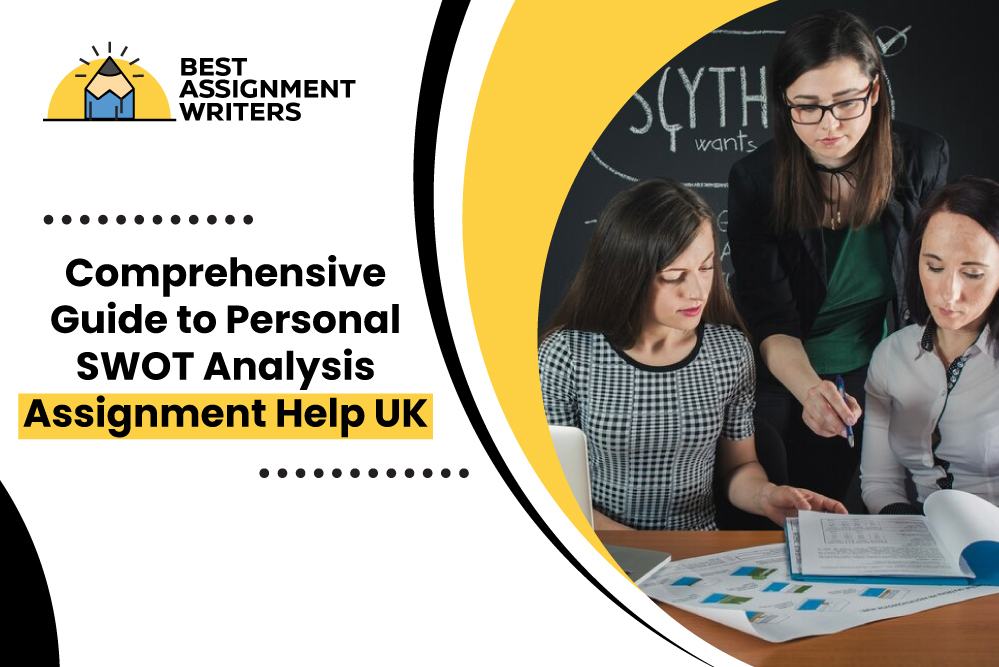Are you ready to take your personal growth to the next level? Then, look no further than a powerful Personal SWOT analysis.
SWOT analysis is a strategic planning technique that can help you uncover your strengths, weaknesses, opportunities, and threats. This can empower you to make informed decisions and achieve your goals.
In this comprehensive guide, we’ll give you an overview of personal SWOT analysis, equipping you with the knowledge and practical steps to conduct your own self-assessment.
Get ready to embark on a transformative journey of self-discovery and unlock your full potential.
What is Personal SWOT Analysis
Personal SWOT analysis is a broadly adopted framework used by businesses, organizations, and individuals to evaluate their current standings and identify areas for improvement or growth.

The acronym of SWOT analysis Stands for:
- Strengths: The innate capabilities, resources, and advantages of any individual that possess.
- Weaknesses: The external limitations, deficiencies, or areas that need improvement.
- Opportunities: Any external factors, trends, or circumstances that you can potentially use for any advantage.
- Threats: The threats are any external factors, challenges, or obstacles that could negatively impact your outcomes, progress, or goals.
When applied to personal development, a SWOT analysis allows you to gain a comprehensive understanding of yourself, which enables you to make informed decisions that capitalise on your strengths, address your weaknesses, seize opportunities, and mitigate any potential threats.
How to conduct a Personal SWOT Analysis?
Personal SWOT analysis can be a transformative experience; follow these steps that can help you to guide through the process:
Identify Your Strengths
Always start the SWOT analysis by reflecting on your positive attributes, skills, and other personal qualities.
To make it easier, consider the following questions:
- What are you naturally good at or excel in?
- What unique talents or abilities do you possess?
- What do others often compliment you on?
- What accomplishments are you most proud of?
- What personal qualities or values contribute to your success?
So, jot down your answers first and try to be honest with yourself. It helps you to identify your strengths and celebrate them.
Acknowledge Your Weaknesses
Next, it’s time to identify areas where you could improve or develop further. Be open and honest with yourself; this step is crucial for personal growth. Reflect on the following:
- What are your limitations or areas of struggle?
- What skills or knowledge do you lack?
- What habits or behaviours hold you back?
- In what areas do you lack confidence or feel insecure?
- What tasks or challenges do you tend to avoid?
Acknowledge your weaknesses without being too harsh on yourself. Remember, the goal is to identify areas for improvement, not criticise.
Explore the Opportunities
In this time, you must look beyond your current circumstances and consider the external factors that could positively impact your life.
To search this out, explore and answer the following questions:
- What emerging trends or changes in your industry or personal life could benefit you?
- What new skills, experiences, or resources could you acquire to advance your goals?
- What untapped connections or networks could you use or take advantage of?
- How can you turn your strengths into new opportunities?
So, always identify opportunities that inspire you to take action and unlock new possibilities.
Anticipate New Threats
Finally, it’s time to consider the external factors that could hinder your progress or help you to derail your goals.
To make this happen, reflect on the following:
- What are the current obstacles, struggles, or challenges that you are currently facing or anticipate in the future?
- What are the changes in your personal or professional life that could negatively impact you?
- What are the potential risks or threats must you be aware of?
- How can external circumstances, competition, or economic assignment help conditions affect your plans?
- Are there any fears, doubts, or risks that might hold you back from achieving your aspirations?
When you understand these potential threats, you can develop strategies to mitigate and overcome these threats.
How to Analyse Your Personal SWOT Findings
Once you have successfully found your SWOT components, it’s time to analyse your SWOT findings and identify the actionable insights:
- Use Your Strengths
- Address Your Weaknesses
- Seizing the Opportunities
- Mitigating New Threats
Use Your Strengths
Always examine your strengths and consider how you can capitalise on them to achieve your goals. Also, identify the ways to amplify your strengths and use them to your advantage.
Moreover, seek new opportunities that align with your strengths and consider how to apply them in new or innovative ways.
Address Your Weaknesses
Try to acknowledge your weaknesses, but don’t let them define you. Also, develop a plan to address and improve these areas.
Similarly, consider the skills or knowledge that you need to acquire, develop the habits and eliminate the bad ones, or find the support that you need to overcome your limitations.
Seizing the Opportunities
Always explore the opportunities and identify how you can use them to your benefit.
Also, brainstorm the ways to capitalise on emerging trends, acquire new skills, or build valuable connections and be proactive in seeking out to pursue new opportunities.
Mitigating New Threats
Always assess the potential threats you have identified and consider using strategies to mitigate or overcome them.
Also, develop contingency plans, build resilience, and prepare for unexpected results.
Moreover, identify the ways to manage the risks, minimise the impact of external factors, and stay adaptable in the face of challenges.
How to Put Your Personal SWOT Analysis into Action?
After completing your personal SWOT analysis, it is time to put your findings into action and develop a comprehensive action plan that incorporates the valuable insights that you’ve gained:
- Set Specific Goals
- Create an Effective Action Plan
- Monitor and Adapt
Set Specific Goals
As per your SWOT analysis, establish clear and measurable goals that align with your strengths, address your weaknesses, capitalise on opportunities, and mitigate threats.
Make sure that these goals are realistic, time-bound, and relevant to your personal growth and further development.
Create an Effective Action Plan
Develop a detailed action plan that outlines the steps you will you to achiever goals.
Also include the timelines, resources, and other accountability measure that helps you keep you on track.
Moreover, break down larger goals into smaller, manageable tasks to make progress more tangible.
Monitor and Adapt
Try to review and update your personal SWOT analysis regularly to reflect any changes in your circumstances, goals, or other priorities.
Also, continuously monitor your professional growth, assess the effectiveness of your strategies, and be willing to adjust your action plan as needed.
Furthermore, embrace a growth mind-set and be open to learning and adapting.
Conclusion – The Power of Personal SWOT Analysis
Conducting a personal SWOT analysis is not just a tool; it’s a journey of self-discovery, personal growth, and goal achievement that is uniquely yours.
Also, by thoroughly examining your strengths, weaknesses, opportunities, and threats, you can better understand yourself and create a roadmap for your personal and professional success.
Remember, the actual value of a personal SWOT analysis lies in its ability to empower you to make informed decisions, capitalise on your unique assets, and navigate the challenges and opportunities that come your way. The key to unlocking this power is approaching the process with an open mind. Commit to your personal development, and watch as your SWOT analysis becomes a powerful catalyst for positive change.
Also, if you still have any queries regarding personal SWOT analysis, don’t rush. student Assignment Help is always here to provide proper guidance on this topic.
Our expert team can assist you with any guidance, and the best part is you can get all these at the most affordable prices. Contact us now!


